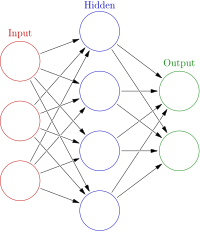
Answer to the Letter to the Editor of G.C. Willhuber concerning “Proposal for a new trajectory for subaxial cervical lateral mass screws” by S. Amhaz-Escanlar et al. (Eur Spine J; 2018: doi: 10.1007/s00586-018-5670-5)
Sign Up to like & getrecommendations! Published in 2018 at "European Spine Journal"
DOI: 10.1007/s00586-018-5714-x
Abstract: I really appreciate the questions raised in the letter about our paper [1]. As the designer of the technique, I am more than happy to answer. The rationale behind all this comes from my personal… read more here.
Keywords: lateral mass; answer; drill bit; mass ... See more keywords

How teachers use prosody to guide students towards an adequate answer
Sign Up to like & getrecommendations! Published in 2021 at "Linguistics and Education"
DOI: 10.1016/j.linged.2020.100886
Abstract: Abstract This paper focuses on the role prosodic features play in displaying evaluative stance in desk talks and oral exams in Norwegian secondary schools. We explore the extent to which teachers make available, to students,… read more here.
Keywords: prosodic features; answer; adequate answer; answer teachers ... See more keywords

Inflexibility of beliefs and jumping to conclusions in active schizophrenia
Sign Up to like & getrecommendations! Published in 2020 at "Psychiatry Research"
DOI: 10.1016/j.psychres.2020.112776
Abstract: Jumping to conclusions (JTC) has been questioned as sufficient cognitive bias for the onset, maintenance, and severity of delusions compared to the bias of inflexibility of beliefs. The WIT (What is this?) test was designed… read more here.
Keywords: decision; inflexibility beliefs; inflexibility; answer ... See more keywords

ASPeRiX, a first-order forward chaining approach for answer set computing*
Sign Up to like & getrecommendations! Published in 2017 at "Theory and Practice of Logic Programming"
DOI: 10.1017/s1471068416000569
Abstract: Abstract The natural way to use Answer Set Programming (ASP) to represent knowledge in Artificial Intelligence or to solve a combinatorial problem is to elaborate a first-order logic program with default negation. In a preliminary… read more here.
Keywords: first order; answer set; answer; approach answer ... See more keywords

Omission-Based Abstraction for Answer Set Programs
Sign Up to like & getrecommendations! Published in 2020 at "Theory and Practice of Logic Programming"
DOI: 10.1017/s1471068420000095
Abstract: Abstract Abstraction is a well-known approach to simplify a complex problem by over-approximating it with a deliberate loss of information. It was not considered so far in Answer Set Programming (ASP), a convenient tool for… read more here.
Keywords: answer set; omission based; answer; based abstraction ... See more keywords

Twelve tips for introducing very short answer questions (VSAQs) into your medical curriculum
Sign Up to like & getrecommendations! Published in 2022 at "Medical Teacher"
DOI: 10.1080/0142159x.2022.2093706
Abstract: Abstract Most undergraduate written examinations use multiple-choice questions, such as single best answer questions (SBAQs) to assess medical knowledge. In recent years, a strong evidence base has emerged for the use of very short answer… read more here.
Keywords: short answer; answer; answer questions; questions vsaqs ... See more keywords

Use of an Email Question and Answer Service to Characterize Vaccine Education Needs in the U.S.
Sign Up to like & getrecommendations! Published in 2017 at "Open Forum Infectious Diseases"
DOI: 10.1093/ofid/ofx163.1131
Abstract: Abstract Background The Centers for Disease Control and Prevention (CDC) educates providers and the public about vaccine-preventable diseases and vaccines. Educational tools should be targeted to appropriate audiences and topic areas relevant to them. One… read more here.
Keywords: answer service; answer; safety; email question ... See more keywords

A Cross-Lingual Hybrid Neural Network With Interaction Enhancement for Grading Short-Answer Texts
Sign Up to like & getrecommendations! Published in 2023 at "IEEE Access"
DOI: 10.1109/access.2023.3260840
Abstract: Automatic Short-Answer Grading (ASAG) is an application for recognizing textual entailment in smart education. With the continuous expansion of the application scope of artificial neural networks, many deep learning models have been applied to grading… read more here.
Keywords: neural network; interaction; short answer; answer ... See more keywords

Advancement of Textual Answer Triggering: Cognitive Boosting
Sign Up to like & getrecommendations! Published in 2022 at "IEEE Transactions on Emerging Topics in Computing"
DOI: 10.1109/tetc.2020.3022731
Abstract: Answer Triggering is still perceived as a challenging task in Question Answering (QA) despite the recent successes chalked up by deep learning models. Its demand for near-human sentence comprehension and answer selection has made previous… read more here.
Keywords: answer triggering; advancement textual; textual answer; cognitive boosting ... See more keywords

Answer Again: Improving VQA With Cascaded-Answering Model
Sign Up to like & getrecommendations! Published in 2022 at "IEEE Transactions on Knowledge and Data Engineering"
DOI: 10.1109/tkde.2020.2998805
Abstract: Visual Question Answering (VQA) is a very challenging task, which requires to understand visual images and natural language questions simultaneously. In the open-ended VQA task, most previous solutions focus on understanding the question and image… read more here.
Keywords: cascaded answering; answer; vqa; model ... See more keywords

Automatic Short-Answer Grading via BERT-Based Deep Neural Networks
Sign Up to like & getrecommendations! Published in 2022 at "IEEE Transactions on Learning Technologies"
DOI: 10.1109/tlt.2022.3175537
Abstract: Automatic short-answer grading (ASAG) is a key component of intelligent tutoring systems. Deep learning is an advanced method to deal with recognizing textual entailment tasks in an end-to-end manner. However, deep learning methods for ASAG… read more here.
Keywords: automatic short; short answer; bert based; answer ... See more keywords